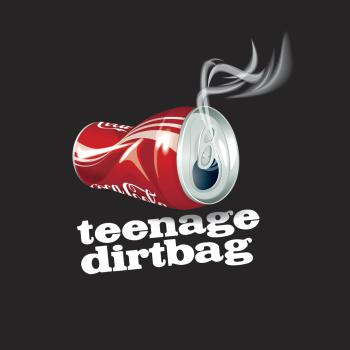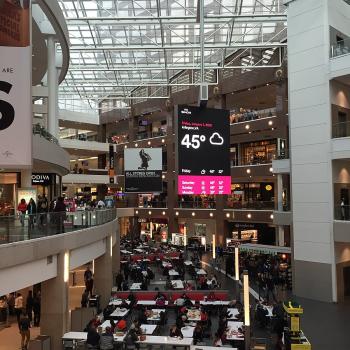and related issues. They’re not all completely depressing!
“Fallout Grows Over Calif. Chief’s Participation in Protest”: But let’s start off with a raincloud for your silver lining.
RICHMOND, Calif. — One week after photos of him holding a sign with the hashtag “BlackLivesMatter” at a peaceful local protest went viral on social media, Richmond Police Chief Chris Magnus is still grappling with the fallout — including accusations from his department’s police union that he broke the law — but says he has no regrets.
“It wasn’t the easiest statement to make,” Magnus said by phone Monday morning, “but it was the right thing to do.”
“Ft. Bend Police, Prosecutors Accused of Abuse in SWAT Incident”:
…But on the night of September 27th, 2011 Chadwick’s commitment to living within the law did him no good at all.
It started when a friend concerned for Chadwick’s emotional well-being called Missouri City police to Chad’s Sienna apartment where he’d been distraught, drinking and unknown to anyone, had gone to sleep in the bathtub.
A SWAT team was summoned.
“They told a judge I had hostages. They lied to a judge and told him I had hostages in my apartment and they needed to enter,” said Chadwick.
more; and see also the court’s response to the guy’s lawsuit….
“Time for a Police Offender Registry”:
…There’s a moral obligation to keep bad cops off the streets. A job with a police department is not a right and shouldn’t be treated like one. Police unions that push for permissive rules that end up protecting bad cops pose a serious public safety threat. Nevertheless, dismantling them where they’ve taken root is a difficult prospect even in the long-term. There are other ways to keep bad cops off the streets. The federal government, and state governments, ought to create and encourage the use of a police offender registry list. Such a list would register individuals who while employed as law enforcement officers were found unfit for duty or faced serious disciplinary issues they may have resigned to avoid. Just as any other component of comprehensive police reform, this won’t eliminate excessive police violence, but it’s a start.
When actually identified, a surprising (or not) number of officers involved in controversial, high-profile use of force incidents have previously disciplinary history. Officer Daniel Pantaleo, the New York City cop who put Eric Garner in a fatal chokehold, had been previously accused, at least twice, of racially-motivated misconduct, including strip searching a man in the middle of the street and allegedly hitting his testicles. The police union in New York City is among the strongest in the country. When a rookie cop shot Akai Gurley in apparent panic last month, he didn’t think twice to reportedly contact his union rep first. A man lay dying in a stairwell for no other reason that he startled a rookie, and the fact that the officer called his union representative before calling for assistance isn’t shocking enough to lead to the officer’s termination. Even if it were, it would still be impossible to terminate the officer immediately. While all this is happening, the state of New York is on the verge of placing even more of the disciplinary regime that applies to cops under the purview of the police unions.
But not everywhere is the situation as hopeless as in New York City. In other parts of the country, cops can get fired relatively more easily. But it doesn’t stop them from finding jobs elsewhere.
“8 Ways to Support Protests Against the Criminal Punishment System, If You Can’t Get Out on the Streets”:
…But the other day, I received a short message from a friend saying that, although she’s sick of the world’s injustices, she doesn’t feel like protesting is safe or effective. Her message reminded me that not everyone is able to get out onto the streets and risk arrest or police violence. This particular friend is a single parent, which means that if she gets arrested, her children risk disappearing into the foster care system. And she’s not the only one who has had to weigh the dangers and realized that she couldn’t take the chance. People with primary caregiving responsibilities, people on parole or probation, people who are undocumented or in the country on student or work visas, may be just as outraged as the people staging die-ins at intersections and blocking bridges and tunnels, but know that they can’t afford arrest.
Her message reminds me that, while the stream of images of protests are exciting, we can’t forget that there are other, less visible ways to fight injustice and support those most directly impacted. Here are eight actions you can take that will not place you at greater risk for arrest and a lengthy battle in the criminal punishment system.
more–there are several items here for people who would like to do a corporal work of mercy this Advent.
“An Alternative to Suspension and Expulsion: Circle Up!”: It’s California so there’s some foofy woo-woo here, but I love the involvement of the parents and creation of community; and also the link between listening to elders’ wisdom, learning self-discipline, and becoming a leader:
One by one, in a room just off the gym floor at Edna Brewer Middle School in Oakland, Calif., seventh-graders go on the interview hot seat.
Some 80 students have applied to be “peer leaders” in the school’s new, alternative discipline program called “restorative justice.”
Kyle McClerkins, the program’s director, grills them on aspects of adolescent life: “What is the biggest challenge for middle school girls? What has changed about you from sixth grade to now?”
This school and the Oakland Unified School District are at the forefront of a new approach to school misconduct and discipline. Instead of suspending or expelling students who get into fights or act out, restorative justice seeks to resolve conflicts and build school community through talking and group dialogue.
Its proponents say it could be an answer to the cycle of disruption and suspension, especially in minority communities where expulsion rates are higher than in predominantly white schools.











